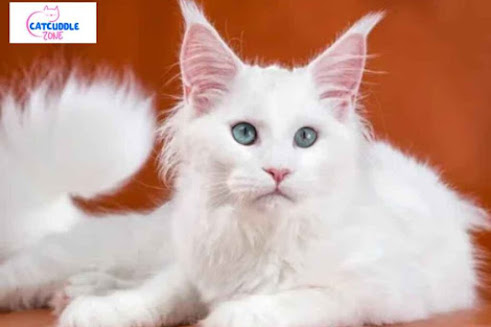Why Is My Cat’s Eye Watering? Find Out Fast – 10 Shocking Reasons
Has your cat’s eye suddenly started watering? While it may seem like a minor issue, watery eyes in cats can be a sign of something more serious. From mild irritants to hidden infections, it’s important to understand what’s behind your kitty’s teary eye.
Let’s explore 10 surprising (and sometimes shocking) reasons why your cat’s eye might be watering — and when you should see a vet.
1. Foreign Object in the Eye
One of the most common causes of watery eyes in cats is a foreign object — like dust, a small piece of debris, or even a tiny blade of grass. Cats are curious creatures, and it’s easy for something to get into their eyes while exploring.
Signs to look for:
-
Excessive blinking
-
Pawing at the eye
-
Squinting
If the watering doesn’t stop or you notice redness, consult your vet to prevent scratching or further irritation.
2. Conjunctivitis (Pink Eye)
Yes, cats can get pink eye too! Conjunctivitis is the inflammation of the tissue lining the eyelids and can cause significant tearing.
Symptoms include:
-
Red, swollen eyes
-
Yellow or green discharge
-
Sensitivity to light
Conjunctivitis can be viral, bacterial, or allergic in origin. Some cases clear on their own, but many require treatment — especially if contagious.
3. Upper Respiratory Infection
Cats with upper respiratory infections often display symptoms similar to humans — sneezing, nasal congestion, and eye discharge. These infections are especially common in kittens and shelter cats.
Eye-watering is usually accompanied by:
-
Runny nose
-
Lethargy
-
Loss of appetite
Infections like feline herpesvirus or calicivirus can cause eye issues as part of their symptom list. Immediate treatment helps prevent complications.
4. Blocked Tear Ducts
Sometimes, the issue isn’t overproduction of tears — it’s the inability to drain them. A blocked tear duct can cause tears to overflow and run down the face.
How to spot it:
-
Constant tearing without discharge
-
Tear staining (especially in white cats)
-
No signs of pain or redness
Veterinarians can flush the duct to clear blockages. In some cases, it may be a recurring issue.
5. Allergies
Just like humans, cats can have allergic reactions to pollen, mold, dust mites, and even certain cleaning products or foods.
Common signs of cat allergies include:
-
Watery or itchy eyes
-
Sneezing
-
Skin irritation
If your cat’s symptoms are seasonal or triggered indoors, allergies may be the culprit. Antihistamines or changing the environment can help.
6. Eye Ulcers (Corneal Ulcer)
A corneal ulcer is a painful and potentially serious condition. It’s a sore or lesion on the surface of the eye, often caused by injury or untreated infections.
Warning signs include:
-
Cloudy appearance
-
Squinting or keeping the eye shut
-
Visible damage to the eye surface
Left untreated, ulcers can lead to vision loss. Immediate veterinary care is crucial.
7. Entropion (Inward Turning Eyelids)
This is a genetic condition where the eyelid rolls inward, causing eyelashes to rub against the eye surface.
Symptoms:
-
Constant tearing
-
Eye redness
-
Discomfort or pawing at the face
It’s more common in certain breeds like Persians and Burmese. Surgery is often required to correct the condition.
8. Glaucoma
Glaucoma is a serious condition caused by increased pressure in the eye. It can cause permanent blindness if not treated quickly.
Signs to watch:
-
Dilated pupils
-
Cloudiness in the eye
-
Watery discharge
-
Pain or sudden behavior changes
This condition is a medical emergency. If you suspect glaucoma, see a vet immediately.
9. Feline Herpesvirus (FHV-1)
Feline herpesvirus is one of the most common causes of eye problems in cats, especially kittens or those from multi-cat environments.
Key symptoms:
-
Watery or crusty eyes
-
Sneezing
-
Conjunctivitis
This virus never completely leaves the body but can be managed with medication, a healthy diet, and stress reduction.
10. Eye Trauma or Injury
An accidental scratch or bump during play can cause your cat’s eye to water. Even a playful tussle with another cat can lead to minor trauma.
What to look for:
-
Sudden change in eye appearance
-
Swelling or bleeding
-
Light sensitivity
Minor injuries may heal quickly, but it’s best to get an exam to rule out more serious internal eye damage.
When Should You See a Vet?
A little watery eye isn’t always cause for alarm — but if it’s persistent, accompanied by discharge, redness, swelling, or behavior changes, it’s time to visit your veterinarian.
It’s especially important to seek help if:
-
Your cat won’t open its eye
-
The eye is clouded or discolored
-
Discharge is thick or colored
-
Your cat is in visible pain
Prompt diagnosis can save your cat’s vision and prevent discomfort.
How to Keep Your Cat’s Eyes Healthy
Here are a few proactive tips:
-
Gently clean around your cat’s eyes with a warm, damp cloth
-
Avoid exposing your cat to smoke, strong chemicals, or dusty environments
-
Keep vaccines up to date, especially for indoor/outdoor cats
-
Schedule regular vet visits to catch problems early
Final Thoughts
While a watery eye might seem harmless, it’s often a sign that something deeper is going on. From simple allergies to serious infections, your cat relies on you to notice these subtle changes.
Being informed and observant can help catch issues early — and ensure your feline friend stays happy, healthy, and bright-eyed.
If you want to learn more about cat health or enjoy some relaxing feline cuddles, be sure to visit Cat Cuddle Zone — your purrfect sanctuary for all things cat! 🐾




Comments
Post a Comment